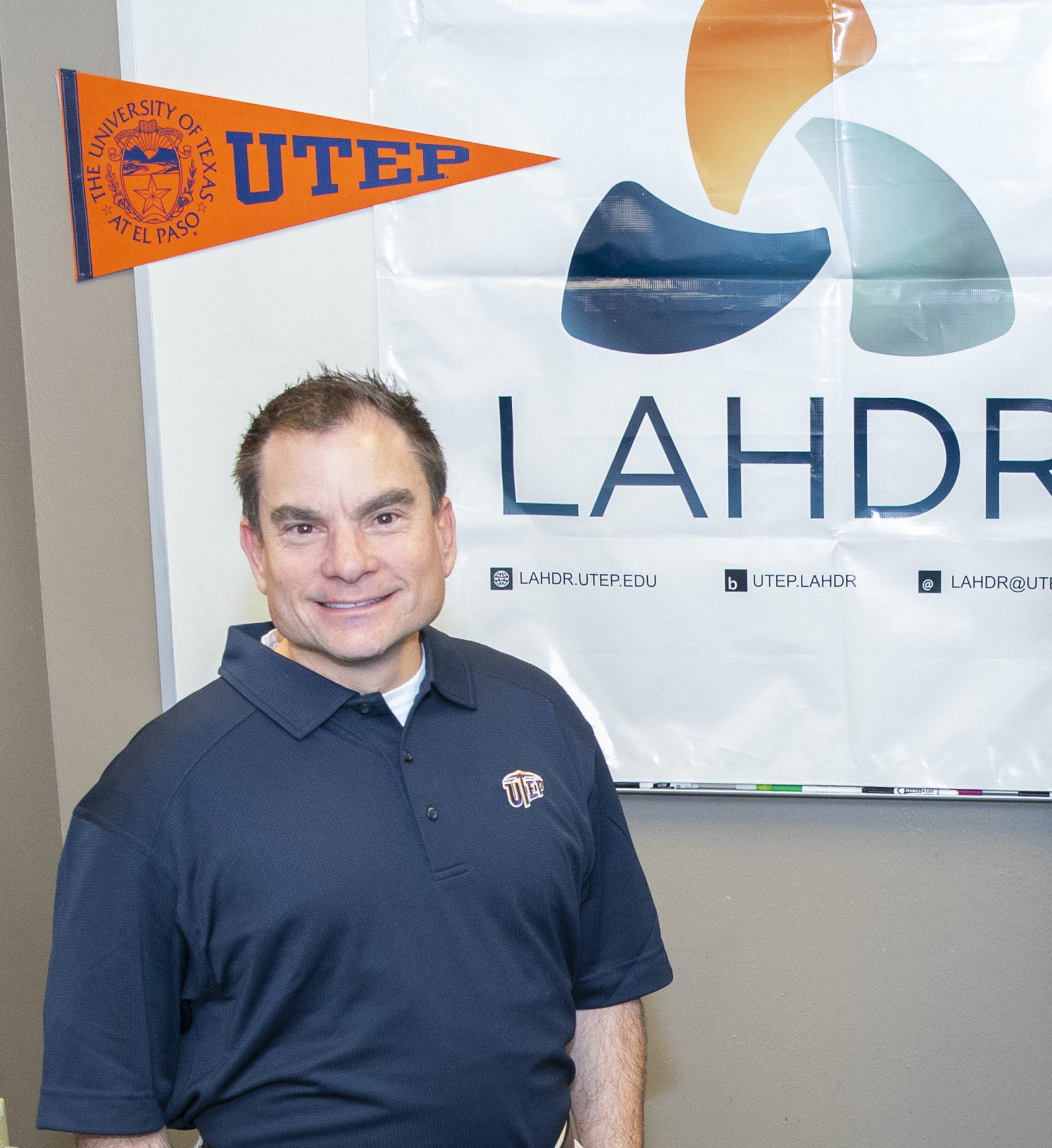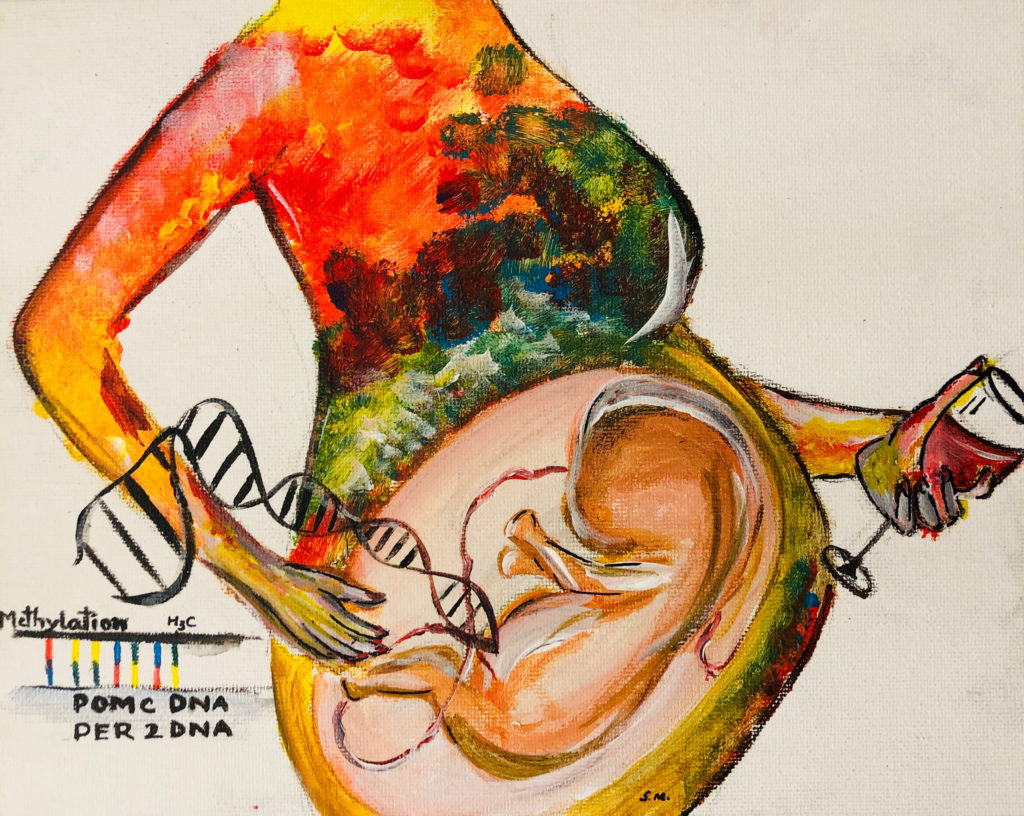Alcohol-related blackouts (ARBs) are fairly common among younger, social drinkers – even considered a rite of passage by some. Yet new research has found that blacking out predicts unique, underlying brain changes involved with learning, memory, and the processing of visual information.
Tag: Binge Drinking
Young Adults’ Varying Reasons Not to Drink Point to Potential for More Effective AUD Prevention and Treatment Interventions
Young adults (aged 18-25) who use alcohol have varying personal reasons for not drinking on some days—reasons that could be harnessed to improve the effectiveness of programs preventing and treating alcohol use disorder (AUD), a new study suggests.
Multiracial individuals face unique challenges that may lead to high rates of alcohol and other drug use
Multiracial or mixed-race individuals – having parents or ancestors of different races – currently comprise more than 10 percent of the U.S. population. There is very little research on Multiracial individuals even though young adults in this group report high rates of alcohol and other drug (AOD) use: binge drinking, illicit drug use other than cannabis, and drug use disorders. New research explores what factors may contribute to high rates of substance use among this population. Results will be shared at the 47th annual scientific meeting of the Research Society on Alcohol (RSA) in Minneapolis, Minnesota.
Young Adult Women’s Alcohol Use is Increasingly Driven by Social Reasons, Narrowing the Binge-Drinking Gap by Gender
The narrowing gap between binge drinking among adult women and men has been driven partly by women’s rising use of alcohol for social reasons—to have fun. In addition, women are increasingly using alcohol to relax or relieve tension, a new study has found. Alcohol use in the USA has increased steadily over the past 20 years, and excessive drinking underlies 1 in 8 deaths of working-age adults. The COVID-19 pandemic contributed to a 25% increase in alcohol-related deaths from 2019 to 2020. Overall, figures like these mask differences by age, however. For over four decades, alcohol use and binge drinking have declined among adolescents and early adults. But by age 30, that effect has plateaued or reversed. Binge drinking has risen more among women than men, narrowing the gender gap for reasons that haven’t been explained by broad societal trends (such as education, family timing, and gender roles). For the study in Alcohol: Clinical & Experimental Research, US researchers considered the
How Young Adults Perceive the Risk of a Single Drink—Versus Whether They See Risk in Binge Drinking—May Drive Heavy Alcohol Use
When drinking choices are perceived as “just one drink,” with each single drink representing relatively slight risk, it may ironically lead to heavier drinking and alcohol-related harms.
Insomnia Symptoms May Predict Subsequent Drinking in Adults
People with symptoms of insomnia may be likely to increase their drinking over time, according to a study published in Alcohol: Clinical and Experimental Research. In the study of adult drinkers, people who had worse insomnia symptoms at the outset of the study tended to increase the amount they drank and the number of times they binge drank during the subsequent year. The researchers found that, even at subclinical levels, insomnia symptoms were a significant predictor of future drinking in adults, suggesting that insomnia symptoms should be addressed to help reduce the risk of problem drinking.
Parental provision of alcohol to adolescent children and peer influence linked to subsequent alcohol harms
Parental supply of alcohol is a relatively common practice in Australia, believed by some parents to be an effective means of teaching their children to drink responsibly. New research shows that family and peer factors each play a role in the development of excessive and risky drinking in early adulthood and associated harms. These results and others will be shared at the 46th annual scientific meeting of the Research Society on Alcohol (RSA) in Bellevue, Washington.
The COVID-19 pandemic accelerated alcohol home delivery, increasing alcohol consumption
During the COVID-19 pandemic, many states expanded online alcohol sales and alcohol home delivery laws. One of the first U.S. studies of the impact on adults of home delivery of alcohol during the early months of the pandemic found significantly more alcohol consumption and binge drinking among those who obtained their alcohol through home delivery than those who did not. These results and others will be shared at the 46th annual scientific meeting of the Research Society on Alcohol (RSA) in Bellevue, Washington.
Emerging adults who experience pain and related anxiety may engage in high-risk drinking
Emerging adults – those aged 18 to 24 years –who experience pain are more likely to engage in high-risk patterns of alcohol use such as binge drinking. Anxiety caused by pain may be what motivates unhealthy coping strategies such as excessive drinking as a form of escape/avoidance. These results and others will be shared at the 46th annual scientific meeting of the Research Society on Alcohol (RSA) in Bellevue, Washington.
Intoxicated Teenage Rats Wearing “Fitbits” Experience Sleep Disturbance Long After Withdrawing from Alcohol, Underlining Ongoing Struggles for Humans who Drink Heavily in Adolescence
Adolescent rats exposed to alcohol vapor experience persistent sleep disruption after withdrawal, as measured by Fitbit-like tracking devices, a new study has shown. The findings, published in Alcohol: Clinical & Experimental Research, provide insight into the relationship between sleep disturbance and heavy drinking in humans. Although adolescents and young adults may be particularly affected by sleep disturbances associated with drinking, little is known about that connection or its mechanisms. Plausibly, the link between disrupted circadian rhythm and substance use may operate in both directions; for example, irregular sleep cycles, including daytime sleepiness, have been implicated in teen substance use. Daytime sleepiness and disrupted activity in humans can be measured using wearable tracking devices, complementing EEG metrics taken at night. Nevertheless, genetic and lifestyle factors make the relationship between alcohol and sleep problems challenging to study in humans, and ro
Do People Who Drink Heavily Have a Higher Tolerance for Alcohol? It Depends, Study Finds
People who have a pattern of heavy drinking showed less impairment than light drinkers after drinking similar amounts of alcohol — yet this difference depends largely on how much time has elapsed after drinking and may only be evident at moderate intoxication. A study published in Alcohol: Clinical and Experimental Research found that people who exceed drinking an amount of alcohol that is typical for them showed substantial impairment. And, when heavy drinkers and lighter drinkers were similarly impaired, the heavy drinkers perceived themselves to be less impaired, which may lead to risky decisions.
Binge Drinking and Night Shift Work Linked to Greater Likelihood of COVID Infection in Nurses
Working the night shift or binge drinking may double the risk of COVID-19 infection, according to a study of nurses published in Alcohol: Clinical and Experimental Research. Both alcohol misuse and night shift work have been shown to impact sleep and promote inflammation in the body, which has been linked to COVID disease severity. The findings from this study strongly suggest that alcohol and circadian misalignment contribute to the development of COVID disease in people exposed to the virus.
Is vaping a new gateway into further substance use? New national study shows adolescent vapers much likelier to use cannabis and binge drink
A new study of more than 50,000 US adolescents across the country indicates that vaping nicotine is strongly linked with an increased likelihood of high levels use of binge drinking and cannabis usage.
Education and peer support cut binge-drinking by National Guard members in half, study shows
A new study shows promise for reducing risky drinking among Army National Guard members over the long term, potentially improving their health and readiness to serve. The number of days each month that Guard members said they had been binge-drinking dropped by up to half over the course of a year of either online only education or online and peer-based support.

IU researchers receive $8.6M NIH grant renewal to study alcohol use, binge drinking
A multi-disciplinary team of Indiana University researchers is focusing their efforts on a growing public health concern: binge and “high-intensity” drinking—extreme drinking behaviors that are increasingly prevalent among college-age adults.
Study Finds Computer-Based Intervention Is Cost-Effective at Reducing Binge Drinking among Adolescents
A computer-based intervention associated with reduced binge drinking episodes among high school students could yield a cost savings of eight thousand euros, according to a Spanish study published in Alcohol: Clinical and Experimental Research. The study found the computer-based intervention cost-effective, resulting in societal savings of €8,000 for each binge drinking episode averted. Computer and web-based interventions can potentially reach a far larger number of students than face-to-face screening and intervention.
Laws Allowing Insurers to Deny Alcohol-Related Claims Do Not Deter Drinking, Study Suggests
State laws designed to prevent dangerous drinking behaviors do not appear to have that effect, according to a study published in Alcoholism: Clinical and Experimental Research. Alcohol exclusion laws allow insurance companies to deny payment for injuries caused by alcohol consumption and were adopted more than seventy years ago to prevent problem drinking and related insurance costs. But a rigorous analysis of drinking behaviors found no evidence that repealing these laws increases alcohol consumption or binge drinking. Previous reports have found these laws to be a barrier to screening and treatment for alcohol issues, resulting in billions of dollars in added healthcare costs.
Alcoholic Pancreatitis Patients with Continued Alcohol Intake May Finally Have Therapeutic Options
Researchers at the Miller School are looking for solutions to the continued effects of alcohol use, its harmful impact, and treatment. Understanding the mechanisms of alcohol abuse has gained importance, especially after the COVID-19 pandemic. Higher alcohol consumption led to an increased burden of pancreatic diseases in society.
Young Women Who Reduce Binge Drinking Could Decrease Risk of COVID-19 Infection, Study Shows
Rutgers research correlates substance-use patterns and personal characteristics with COVID-19 impacts.
Sleep Disruption Predicts Drinking and Cannabis use in Young People, with Middle and High School Students Potentially Most Vulnerable
A five-year study has highlighted the importance of healthy sleep patterns in relation to future binge-drinking and cannabis use in adolescence and young adulthood, as reported in Alcoholism: Clinical and Experimental Research. The work builds on growing evidence that sleep characteristics are predictive of future substance use and related problems in young people, and could inform strategies for substance use prevention and intervention. Most previous studies assessed only a small range of sleep characteristics, and had limited follow-up. In the new analysis, researchers used six annual assessments from the National Consortium on Alcohol and Neurodevelopment in Adolescence (NCANDA) study to examine whether multiple sleep characteristics in any year predict alcohol and cannabis use the following year. Data from over eight hundred NCANDA study participants, aged 12 to 21 at baseline, were included.
A ‘factory reset’ for the brain cures anxiety, drinking behavior
Gene editing may be a potential treatment for anxiety and alcohol use disorder in adults who were exposed to binge drinking in their adolescence, according to the results of an animal study published in the journal Science Advances. The researchers used a gene-editing tool called CRISPR-dCas9 in their experiments to manipulate the histone acetylation and methylation processes at the Arc gene in models of adult rats.
Forecasting the Future Alcohol Burden: Binge Drinking Rates to Converge in Young Men and Women, and Increase Among 29- to 30-year-olds, by 2040
A study has revealed important gender and age differences in forecasted future levels of binge drinking, and highlighted key factors underlying these trends.
The positive reinforcement of social networking sites can increase behaviors like binge drinking
Social-media sites – for example, Instagram, Snapchat, and Facebook – that provide clear networking functions such as liking, sharing, commenting, and personal messaging with other users or “followers” are popular among youth. They have also become a prime milieu for the socialization of young people’s alcohol use. These results and others will be shared at the 44th annual scientific meeting of the Research Society on Alcoholism (RSA), which will be held virtually this year from the 19th – 23rd of June 2021 due to the COVID-19 pandemic.
Poll finds risky drinking patterns in older adults during pandemic
As many older adults get back to normal life across the United States thanks to high rates of vaccination and lower COVID-19 activity, a new poll suggests many should watch their alcohol intake.
New study examines neighborhood and social network’s relation to binge drinking among adults
Study examines how neighborhood and social network characteristics relate to adult binge drinking.

Pandemic-related anxiety associated with women drinking more
In a new study, nearly two-thirds of female participants reported drinking more since the beginning of the COVID-19 pandemic, including increases in daily drinking, drinking earlier in the day, and binge drinking.
“Why Did You Drink Yesterday?” Young Adults’ Drinking Intensity is Associated with Their Motives for Drinking on that Day
The amount of alcohol an individual consumes on a given day, and the consequences of that drinking, vary according to their motives for drinking. The findings are from a study among young adults reported in Alcoholism: Clinical and Experimental Research. ‘High-intensity’ drinking, defined as 8+ drinks for women or 10+ drinks for men (i.e. twice the binge-drinking threshold), is a particularly risky level of drinking that is common among young adults. Because individuals may engage in high-intensity drinking on some days but not others, identifying risk factors for high-intensity drinking on a given day is critical for developing real-time interventions to reduce harm. Drinking motives – a person’s reasons for using alcohol – are known to be linked to alcohol use at a particular time, and also vary across drinking days. Certain motives, for example those related to enjoying the feeling of intoxication or enhancing the fun of a gathering, have been previously linked to higher alcohol con
Dual health-risk behaviors in young adults: Problem drinking and maladaptive eating both linked to the brain’s reward pathway and impulsivity
Risky drinking often co-occurs with maladaptive eating in young adults, according to a study reported in Alcoholism: Clinical and Experimental Research. While previous research had suggested a link between heavy alcohol use and obesity-related factors in college students, the latest study aimed to identify specific profiles of problematic drinking, food addiction, and obesity within a more diverse sample of community-dwelling young people. The researchers also explored shared theoretical risk factors for heavy drinking and overeating, and how these differ across the profiles. Calorie-dense food and alcohol both require little effort to obtain and consume, and each generates immediate and potent experiences of reward in the brain. According to ‘reinforcer pathology’ theory, people who place a high value (‘demand’) on unhealthy items, and who also favor small immediate rewards (such as food and alcohol) over larger delayed rewards (such as health), are at highest risk for overconsumption
Against the Clock: Circadian Rhythm Genes in Key Brain Region are Involved in Binge Drinking
Researchers have identified a causal link between binge drinking and circadian clock genes in a brain region previously implicated in hazardous alcohol use. Binge drinking is a common and harmful pattern of alcohol use, responsible for more than half of alcohol-related deaths. There is already robust evidence that genes involved in controlling circadian rhythm — the body’s natural processes that follow a 24 hour light/dark cycle — are associated with hazardous drinking and alcohol abuse. However, it is not known which areas of the brain mediate the clock genes’ effects on drinking. A brain region known as the nucleus accumbens shell (NAcSh) is already noted for its role in risky drinking; the region forms part of the brain’s ‘reward system’, reinforcing the use of alcohol and other addictive substances by release of dopamine. In the new study, reported in Alcoholism: Clinical and Experimental Research, scientists investigated whether clock genes in the NAcSh are involved in regulating
Huge Study Links Risky Drinking with Low Social Support and Area of Residence
People who report having low social support are substantially more likely to experience heavy drinking and binge drinking than those who feel more supported, a large European study suggests. The researchers also found strong evidence that risky drinking is associated with areas of residence. Although alcohol use is known to be linked to social, economic, and demographic factors, the research is incomplete; it is not clear to what extent some of these factors, especially environmental conditions, predict dangerous drinking. Investigators in Spain designed a study that was unusual in exploring both heavy drinking and binge drinking and both individual and contextual (environmental) factors. The study, in Alcoholism: Clinical & Experimental Research, confirmed individual risk factors and highlighted certain environmental conditions that may help target interventions for those at risk.
One size does not fit all for young-adult binge-drinkers: Research reveals high-risk clusters that may inform future trajectories and treatment interventions
Young adults who binge drink can be categorized within distinct subgroups based on substance use and mental health symptoms, according to research reported in Alcoholism: Clinical and Experimental Research. Binge drinking in young people is very common and linked to adverse outcomes including academic underachievement, risky behaviors, alcohol poisoning, other substance use, and harm to the brain. While some ‘age out’ of binge-drinking in their mid-to-late 20s, others continue with harmful patterns of alcohol use. Previous research has shown that other substance use and mental health indicators vary widely among binge-drinking youth, and could help explain the differences in trajectories. It is also important to understand young people’s motivation for drinking alcohol to inform why some people naturally reduce and others persist or worsen. In the new study, researchers sought to identify distinct patterns of drinking, drug use, and mental health symptoms among young binge drinkers, an
UIC to study how adolescent binge drinking impacts adult behavior
The University of Illinois Chicago has received $4.5 million in continuation funding from the National Institute on Alcohol Abuse and Alcoholism to support the UIC site of the national Neurobiology of Adolescent Drinking in Adulthood, or NADIA, consortium.
Heavy-drinking Rodents Enhance Understanding of Problematic Alcohol Use Patterns
New study findings in mice suggest that repeated binge drinking increases the motivation to consume alcohol to excess. In humans, the pattern of drinking (as well as quantity consumed) can be an important indicator of future drink problems; in adolescents, for example, a binge-drinking pattern can predict development of alcohol use disorder (AUD). Studies using laboratory animals that have been selectively bred to drink alcohol (ethanol) in large amounts can provide valuable insights on problematic drinking patterns, using experimental approaches that would be impossible or unethical to apply in humans. Indeed, many important findings on responses to alcohol have been gained from animal studies, conducted to strict welfare guidelines. The latest study, reported in Alcoholism: Clinical and Experimental Research, examined two behaviors in mice that reflect their motivation to experience alcohol’s rewarding effects on the brain.

Does estrogen influence alcohol use disorder?
Researchers show that high estrogen levels may make alcohol more rewarding to female mice and reducing the number of estrogen receptors led to decreased drinking behavior, but only in female mice.
Female college students more affected academically by high alcohol use than men
Female college students appear to be more affected by high alcohol use than men, which may lead to less interest in academics, according to new research including by faculty at Binghamton University, State University of New York.

UTEP Center to Study How Men Overcame Alcohol Abuse
A new study at The University of Texas at El Paso will look at the psychological factors that led some Hispanic men to successfully change their heavy drinking behavior in order to help others make similar changes. The study begins during Alcohol Awareness Month.
To BOLDly Go (or No-go): Brain imaging predicts frequent binge drinking in adolescents
A study published in the journal Alcoholism: Clinical and Experimental Research could inform efforts to prevent adolescents from escalating to harmful patterns of drinking. Binge drinking in adolescence has many short- and long-term heath consequences, including risk of future alcohol use disorder and potential for harm to the developing brain. The risks are greatest for those who binge frequently – at least once a week. A hallmark of binge drinking is a reduced capacity to control one’s alcohol intake, related to a neurological process of ‘inhibitory control’ involving several regions of the brain. In adolescents who have not yet started drinking, specific alterations in these brain responses have been linked to an increased risk of future alcohol and drug use; however, it was not known if there are changes that could predict escalation of alcohol use among those already drinking. Therefore, researchers from the University of California investigated whether abnormal brain patterns co

Mechanism connects early binge drinking to adult behaviors
Intermittent exposure to high levels of alcohol in adolescent animals leads to increased levels of microRNA-137 in the brains of adults; blocking the molecule helps to reverse or reduce the lasting effects of youth drinking, such as increased alcohol use and anxiety.

Moderate to Heavy Drinking During Pregnancy Alters Genes in Newborns, Mothers
Mothers who drink moderate to high levels of alcohol during pregnancy may be changing their babies’ DNA, according to a Rutgers-led study.